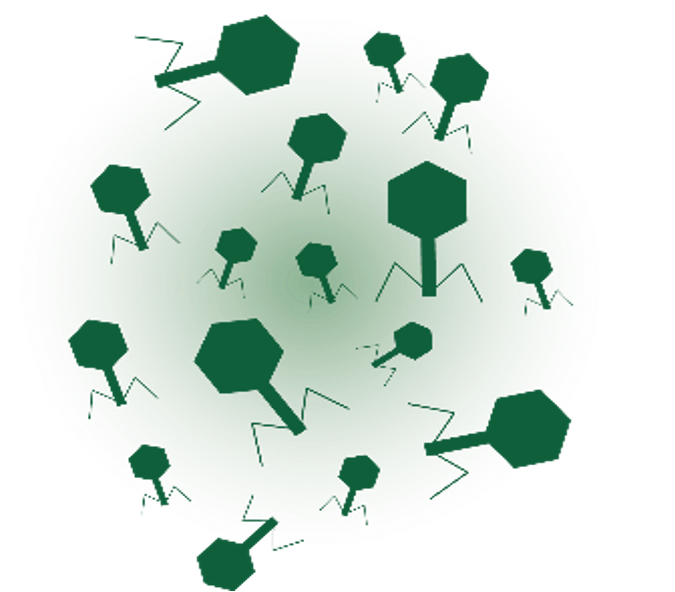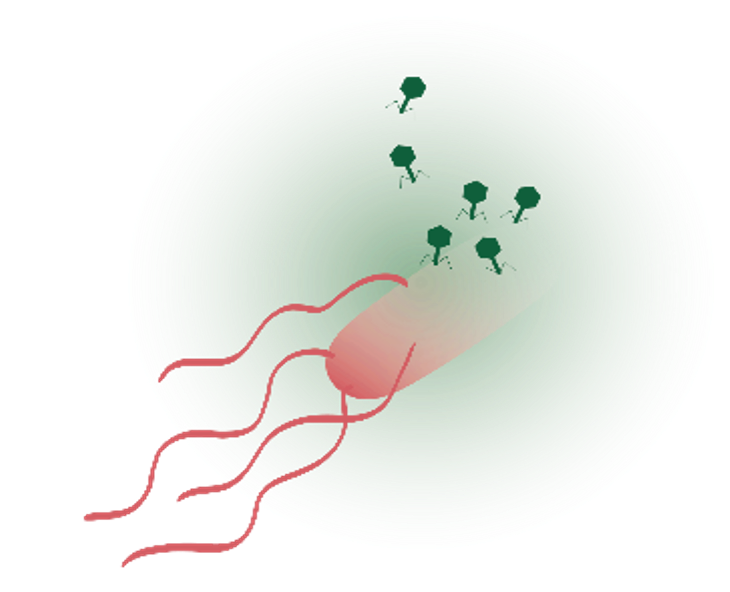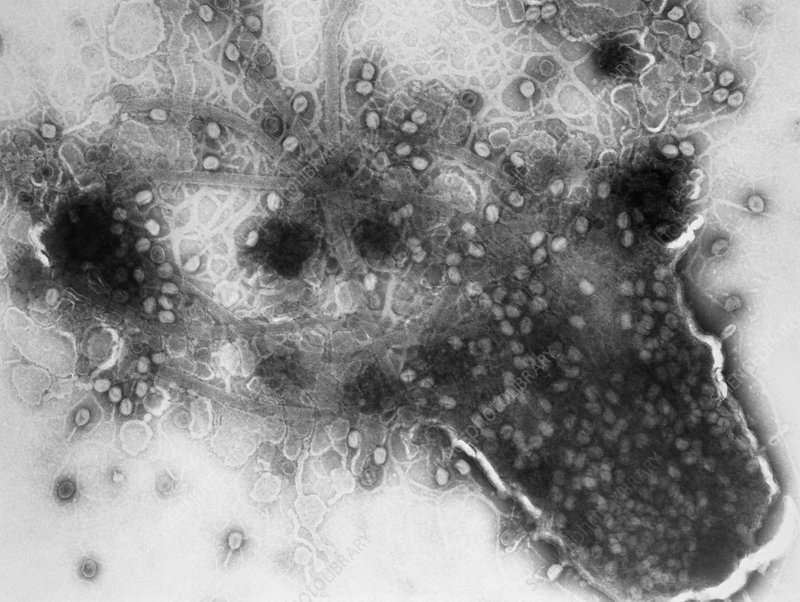Bacteriophages are harmless for humans but capable of destroying bacteria with high specificity.



Virus harmless for humans
exclusively attack the bacteria causing the infection
and destroy them
An alternative to conventional antimicrobial therapy, and a powerful tool for treating persistent infections.
Bacteriophages are abundant in nature, there are at least 1031 different known types. It is more than any other species on earth, even all bacteria collectively cannot match this massive number of viruses. Bacteriophages are smaller than their prey and are visible only under a scanning electron microscope - mostly their size varies in nanometers. Phages are available in different habitats such as oceans, thermal springs, soil, glaciers and even the human intestine. In terms of form, specificity and function, their diversity is unmatched in nature.
Bacteriophages are harmless for humans but capable of destroying bacteria with high specificity.



Virus harmless for humans
exclusively attack the bacteria causing the infection
and destroy them
Bacteriophages selectively attack bacteria and inject their DNA/RNA into it. By doing so, they seize the replication machinery of the bacterial cell for their own benefit and begin to replicate within the cell itself. The exponential increase of the phages inside the bacterial cell causes the bacterium to explode and die rapidly with a sort of "Trojan horse" effect (from the inside out).

In addition to the death of the single bacterial cell, numerous viral particles will be released which will attack other bacteria of the same species, drastically reducing the number of bacteria causing the infection. The Transmission Electron Microscopy (TEM) image shows the lysis of Escherichia coli, a rod-shaped bacterium, by T4 bacteriophages. Bacteriophages are those particles with a hexagonal head and a small thin tail that are released from the exploded bacterial cell.